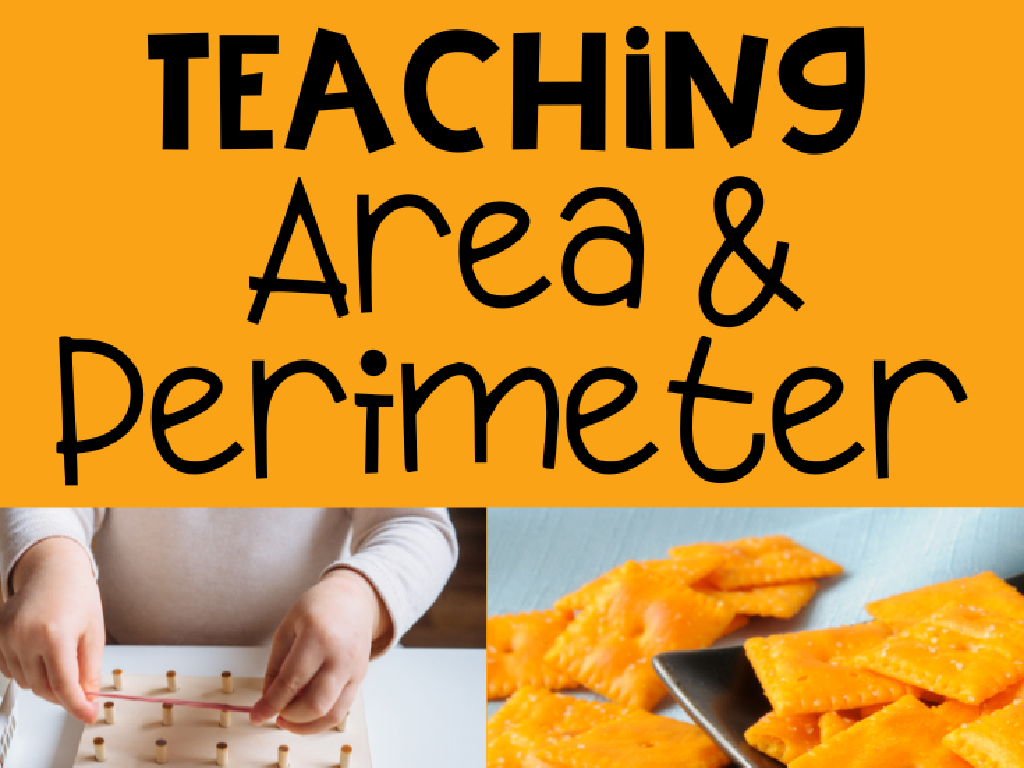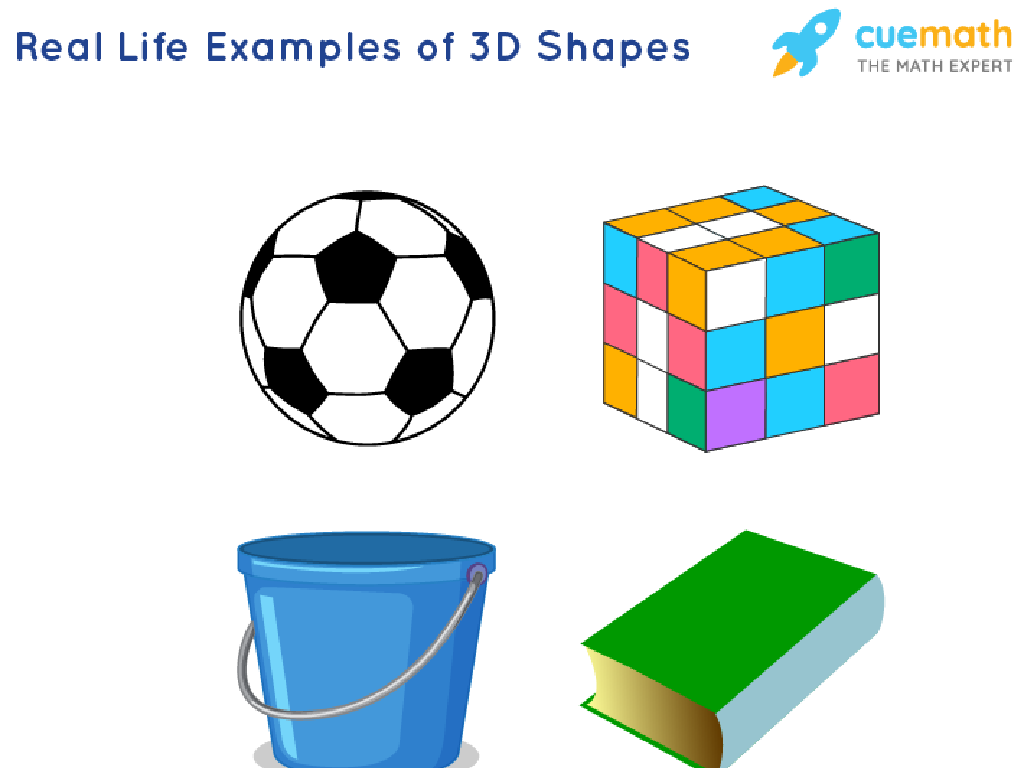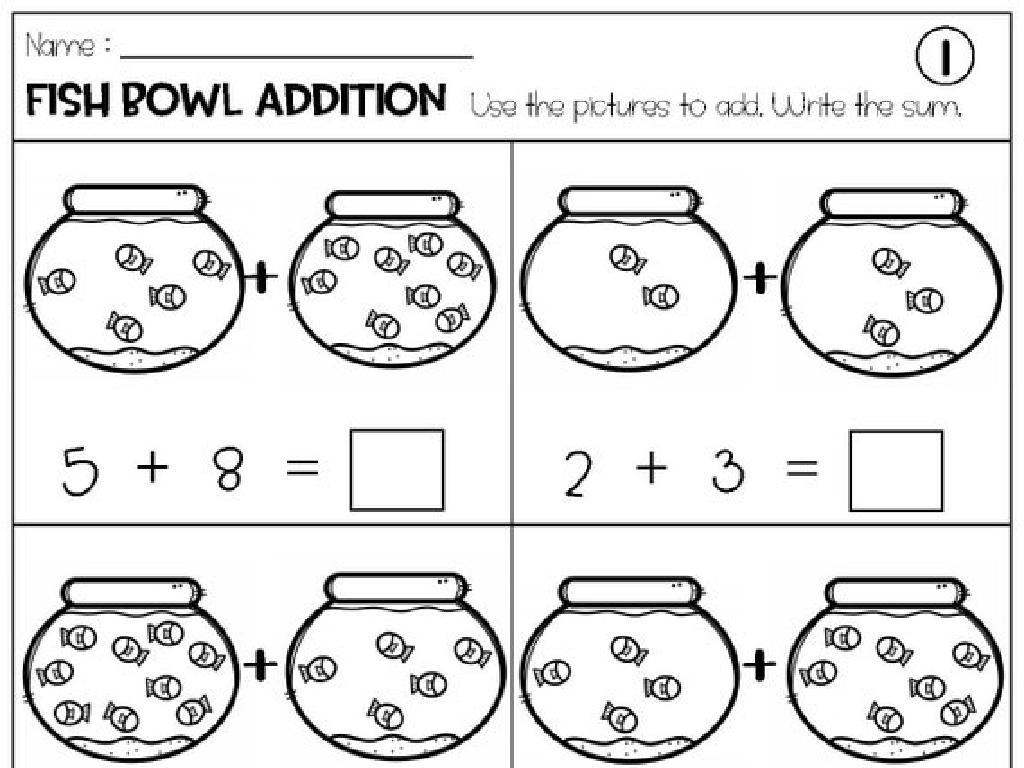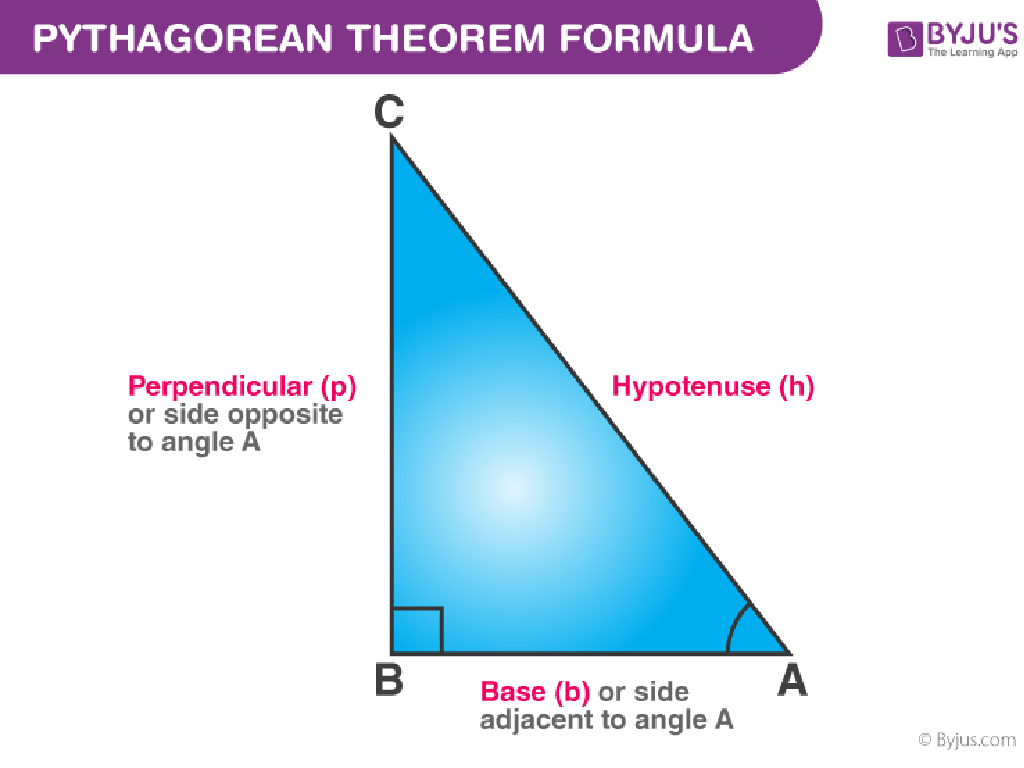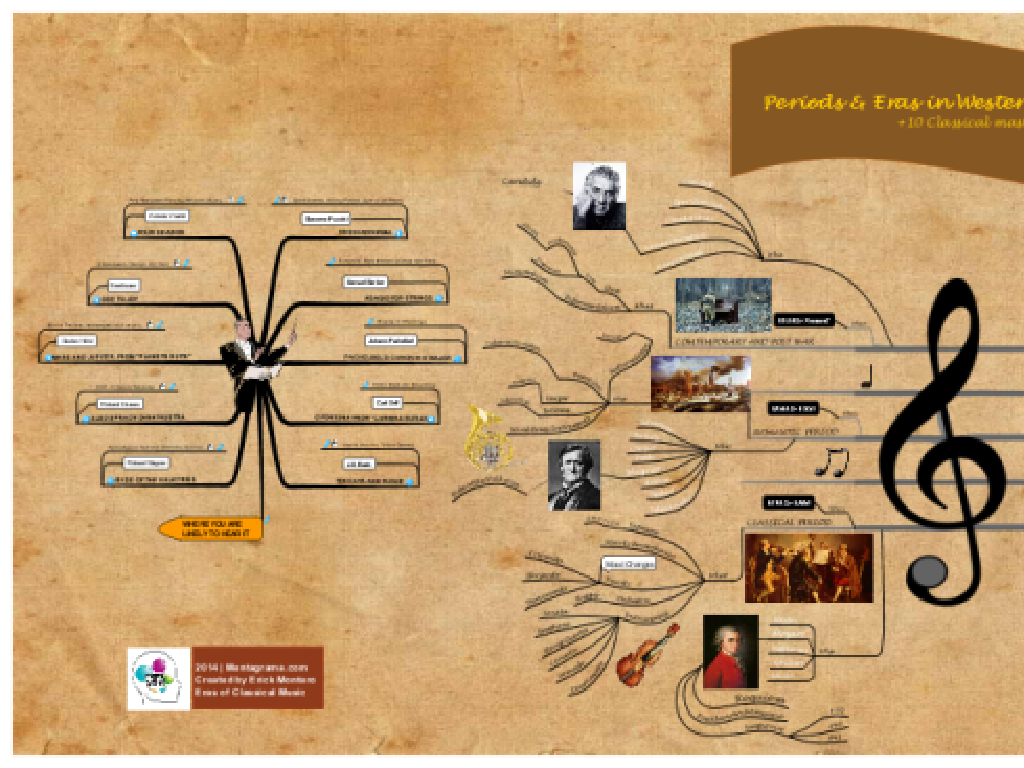Estimate Quotients: 2-Digit Divisors
Subject: Math
Grade: Fifth grade
Topic: Division
Please LOG IN to download the presentation. Access is available to registered users only.
View More Content
Estimating Quotients with 2-Digit Divisors
– Grasp the concept of estimation
– Estimation helps approximate numbers quickly
– Learn why estimation is valuable
– It simplifies complex division, making it faster
– Practice estimating with 2-digit divisors
– Example: 250 ÷ 12 H 250 ÷ 10 = 25
– Apply estimation in division problems
– Use estimation to check division work for reasonableness
|
This slide introduces the concept of estimation in the context of division with 2-digit divisors. Estimation is a powerful tool that allows students to quickly approximate the result of a division problem without needing to calculate the exact answer. It’s particularly useful when dealing with complex division problems that involve large numbers or when a precise answer is not necessary. By practicing estimation with 2-digit divisors, students will learn to simplify problems and make educated guesses. For example, instead of dividing 250 by 12, which can be challenging, they can estimate by dividing 250 by 10, which is simpler and provides a close approximation. Encourage students to use estimation to check their work for reasonableness, ensuring their answers make sense in the context of the problem.
Understanding Estimation with 2-Digit Divisors
– What is estimation?
– Estimation is finding a number close to the exact answer.
– Estimation simplifies division
– It helps solve complex problems by rounding numbers.
– Estimation is an educated guess
– Like guessing the number of candies in a jar, but with clues!
– Practice estimation with examples
– Example: 154 ÷ 12 H? Round 12 to 10 for easier division.
|
Estimation is a crucial skill in mathematics, especially when dealing with division problems that involve 2-digit divisors. It allows students to quickly find an approximate answer without needing to calculate the exact result. This can be particularly useful in real-life situations where an exact number is not necessary, or when checking the reasonableness of an answer. By rounding numbers to the nearest ten or hundred, students can simplify the division process and make ‘educated guesses’ about the result. Encourage students to practice by rounding divisors and dividends to numbers that are easier to work with and then performing the division. This slide will introduce the concept and show how estimation is applied in division.
The Role of Estimation in Division
– Why estimate in division?
– Ensures answer reasonableness
– Check if your division result makes sense
– Simplifies mental calculations
– Quicker math in your head without paper
– Useful when exactness isn’t required
– Approximations work for some real-life problems
|
Estimation is a valuable skill in division, especially when dealing with 2-digit divisors. It helps students quickly determine if their answers are in the right ballpark, which is crucial for checking work and understanding the magnitude of numbers. Estimation also aids in performing mental math, allowing students to solve division problems more efficiently without the need for detailed calculations. Furthermore, in real-world scenarios, exact answers are often not necessary; being able to estimate can save time and effort. During the lesson, provide examples of when an exact answer is not needed, such as when planning a party and estimating the amount of food needed for guests.
Estimating Quotients with 2-Digit Divisors
– Round the divisor to nearest ten
– If divisor is 63, round to 60
– Simplify division with rounded divisor
– Use 60 to divide 1548 for an estimate
– Example: 1548 ÷ 63 H 1548 ÷ 60
– Rounding makes complex division easier
– Practice estimation with exercises
|
This slide introduces the concept of estimating quotients using 2-digit divisors, which is a useful skill for simplifying division problems. Start by explaining the importance of rounding the divisor to the nearest ten or hundred, which makes mental math more manageable. Provide the example on the slide, showing how 63 rounds down to 60, and then use 60 to divide 1548. Emphasize that this is an estimation technique to get a close answer quickly. Encourage students to practice with additional problems, rounding divisors and estimating quotients, to build their confidence and speed in division.
Let’s Practice Rounding!
– Round 63 to nearest ten
– Is 63 closer to 60 or 70?
– Round 1548 to nearest hundred
– Is 1548 closer to 1500 or 1600?
– Share your rounded numbers
– Understand rounding’s role in estimating
– Rounding helps simplify numbers for easier division
|
This slide is designed to help students practice the skill of rounding, which is essential for estimating quotients with 2-digit divisors. Start by rounding 63 to the nearest ten. Ask students if 63 is closer to 60 or 70 to determine whether they should round down or up. Next, have them round 1548 to the nearest hundred, discussing whether it’s closer to 1500 or 1600. Encourage students to share their answers with the class to foster a collaborative learning environment. Emphasize that rounding is a tool that simplifies numbers, making it easier to estimate quotients during division. Provide additional examples if time allows and ensure that students understand the concept before moving on to more complex problems.
Estimation in Action: Dividing by 2-Digit Divisors
– Let’s estimate: 1548 ÷ 63
– Round 63 to 60 for easier division
– Rounding makes complex division simpler
– Calculate 1548 ÷ 60 with your partner
– Use multiplication to help find the estimate
– Write down your estimate and reasoning
– Share how you arrived at your estimate
|
This slide is designed to engage students in the process of estimating quotients with 2-digit divisors. Start by presenting the problem 1548 ÷ 63 and guide the students to round the divisor to the nearest ten to simplify the calculation. Encourage them to work with a partner to foster collaborative learning and to discuss their thought process. This will help them understand the concept of estimation and its practical application in division. After they have written down their estimates, have a few pairs share their reasoning with the class to reinforce the concept. Remember to emphasize that the goal is to get a close estimate, not the exact answer.
Checking Our Work: Estimation vs. Exact Answer
– Compare estimate to exact answer
– How close is estimate to 1548 ÷ 63?
– Was your estimate near 24, the exact quotient?
– Understand estimate vs. exact difference
– Estimates can be off due to rounding; exact answers are precise
– Practice improves estimation accuracy
– The more you practice, the better you’ll get at estimating!
|
This slide encourages students to reflect on the accuracy of their estimation skills when dividing by two-digit divisors. After calculating an estimate for 1548 ÷ 63, they should compare it to the exact quotient. Discuss why their estimate may differ from the exact answer, emphasizing the role of rounding and the importance of understanding the magnitude of numbers. Encourage students to practice with different numbers to improve their estimation skills. This exercise will help them develop a sense of number scale and improve their ability to quickly assess the reasonableness of their answers in division problems.
Class Activity: Estimation Relay
– Form groups for relay activity
– Solve estimation problems together
– Work on problems involving 2-digit divisors
– Each member completes a step
– Pass the problem after your turn
– Aim for correct estimate to win!
– Speed and accuracy will lead your team to victory
|
This activity is designed to encourage teamwork and reinforce the concept of estimating quotients with 2-digit divisors. Divide the class into small groups and provide each group with a set of estimation problems. Each student in the group is responsible for one step of the estimation process. Once they complete their step, they pass the problem to the next student. The goal is to be the first group to arrive at the correct estimate. This will help students practice breaking down problems into manageable steps and rely on each other’s strengths. Possible variations of the activity could include different levels of difficulty for the problems or a ‘relay race’ where students physically move to a station to complete their step.
Estimation Mastery in Division
– Recap: Why estimate?
– Estimation helps us find approximate answers quickly.
– Estimation simplifies division
– With estimation, we can easily divide by 2-digit numbers.
– Practice leads to perfection
– Keep practicing at home!
– Try more problems to get better at estimating quotients.
|
This slide aims to conclude our lesson on estimating quotients with 2-digit divisors. Emphasize the value of estimation as a tool for making complex division problems more manageable. Highlight how estimation allows students to quickly approximate answers without needing to calculate the exact result, which can be particularly useful in real-life scenarios where an exact number is not necessary. Remind students that becoming proficient at estimation, like any skill, requires regular practice. Encourage them to continue practicing with different types of division problems to improve their estimation skills. Provide additional worksheets or recommend online resources for further practice at home.

